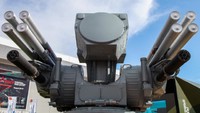米海兵隊特殊部隊 MARSOC で、「Group 1」小型無人機 (Nano-VTOL) の運用を希求

これは、海軍の小型戦術無人機プログラムのマネージャーを務める Eldon Metzger 海兵隊大佐が、無人航空機の業界団体 AUVSI (Association for Unmanned Vehicle Systems International) 主催のレビューの席上で発言したもので、対象となる小型無人機は Group 1 に分類される垂直離着陸 (VTOL: Vertical-TakeOff-and-Landing) 型とのこと。
急速に普及が進む軍用無人航空機については、機体の大きさや性能、用途や搭載された機能など様々なものがあるが、概ねのクラスを分別するために、以下のようなグループ化がおこなわれている。
Table: DoD UAS Group Descriptions
• Group 1:また、Metzger 大佐によれば、既に Nano-VTOL の能力評価は始まっているとする一方で、海軍特殊部隊 SEALs 支援用の UAS については、より大型の Group 2 に焦点が合わされていることにも言及している模様。
Typically hand-launched, self contained, portable systems employed for a small unit or base security. They are capable of providing “over the hill” or “around the corner” reconnaissance and surveillance. They operate within visual range and are analogous to radio-controlled model airplanes as covered in AC 91-57.30
• Group 2:
Small to medium in size and usually support brigade and intelligence, surveillance, reconnaissance, and target acquisition requirements. They usually operate from unimproved areas and launched via catapult. Payloads may include a sensor ball with electro-optic / infrared (EO/IR) and laser range finder/designator (LRF/D) capability. They typically perform special purpose operations or routine operations within a specific set of restrictions.
• Group 3:
Operate at medium altitudes with medium to long range and endurance. Their payloads may include a sensor ball with EO/IR, LRF/D,
signal intelligence (SIGINT), communications relay, and chemical biological radiological nuclear explosive (CBRNE) detection. They usually operate from unimproved areas and may not require an improved runway.
• Group 4:
Relatively large UAS that operate at medium to high altitudes and
have extended range and endurance. They normally require improved areas for launch and recovery, beyond line-of-sight (BLOS) communications, and have stringent airspace operations requirements. Payloads may include EO/IR sensors, radars, lasers, communications relay, SIGINT, Automatic Identification System (AIS), and weapons.
• Group 5:
Include the largest systems, operate at medium to high altitudes, and have the greatest range, endurance, and airspeed capabilities. They require improved areas for launch and recovery, BLOS communications, and the most stringent airspace operations requirements. Group 5 UAS perform specialized missions such as broad area surveillance and penetrating attacks.
SEAPOWER Magazine 2014/11/05
Unmanned Aircraft System Airspace Integration Plan by U.S. DoD 2012/04/01
Photo: Sergeant Tatum Vayavananda via AFRICOM 2013/05/06
Image is for illustration purposes only.
★この記事へのコメント
コメントを投稿する
★この記事をブックマーク/共有する
★新着情報をメールでチェック!
★Facebookでのコメント













